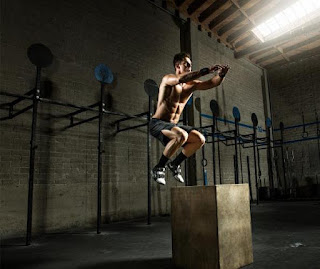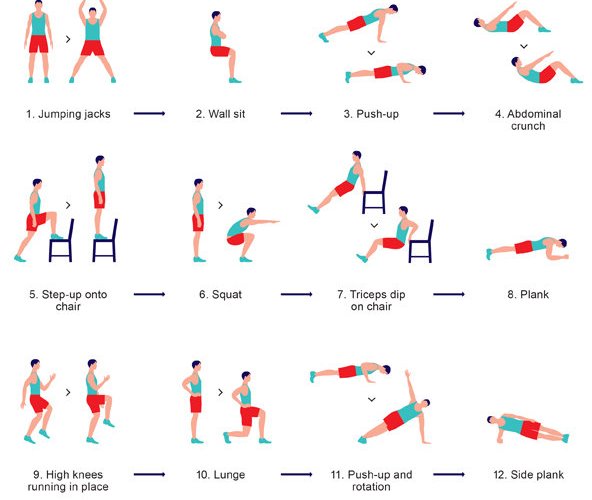Tips for men who want to build muscle effectively and gain lean muscle mass
In order to grow your muscles, you must apply enough stress for them to become fatigued. — 123rf.com
For most males, hitting the gym is a way to get healthy, look good and feel more confident. To get the most out of a workout session, a good understanding of health and nutrition can help maximise results. However, if you were to ask most men what it takes to build muscle, they’d probably say that you just need to eat protein, protein and more protein. Sure, protein is important. After all, your muscles are made of protein, and your body requires adequate protein in the diet in order to have the building blocks it needs to build muscle mass. But protein alone won’t do. You also need to pay attention to the rest of your diet and exercise routine. To help men start off on the right track, here are some tips on how to build muscle effectively.Strike the right balance
A lot of people who are trying to bulk up are also trying to lose body fat at the same time. But sometimes, the approaches they use to meet those goals are at odds with each other. They’ll take in plenty of protein, which, when coupled with a strength training routine, should lead to more lean mass. But they may also cut their total calories back too far in an effort to get “shredded.” That can be a problem. If you cut your calories too much, some of the protein that you eat is going to be burned for fuel rather than being used to support muscle development. So, to effectively build muscle mass, you want to ensure that you have enough calories to support your activity and the right balance of nutrients.
Don’t shy away from healthy fats, as they are a vital structural component of every cell membrane, including muscle cells. — Photos: Herbalife Nutrition
Fuel up with carbohydrates
Many bodybuilders see carbohydrates as the enemy, and that can be a mistake. Yes, highly refined carbohydrates and snacks hardly do the body good. But the right carbohydrates help to fuel activity, including working muscles. Good sources can be found in whole grains, beans, fruits and vegetables. Without adequate carbohydrates to fuel your exercise, some of the protein you’re eating might get burned for fuel. So, to avoid “burning the candle at both ends,” make sure to include enough high-quality carbs in your diet.Get some healthy fats
Dietary fat is sometimes underappreciated by some athletes. Like carbohydrates, fats may have an undeserved bad reputation. Small amounts of the right kinds of fats are very important. That’s because certain fatty acids, the building blocks of dietary fats, are essential as the body can’t make them. Fatty acids are a vital structural component of every cell membrane, including muscle cells. The body relies on fat to fuel moderate intensity, longer-term exercise. That’s just the type of exercise that might be coupled with a strength training regimen to build mass and lose body fat. Good sources of fatty acids include nuts. seeds, fatty fish, olive oil and avocado.Protein intake and timing are key
Protein is crucial for muscle development, but instead of simply focusing on the amount of protein you take in, you should also pay attention to the timing of your intake. The process of muscle protein synthesis (MPS) is stimulated by strength training activity, but it’s also stimulated when you eat protein. This is one reason why those looking to bulk up should aim to spread their protein intake evenly over meals and snacks throughout the day. MPS is greater under these conditions than it is under a more typical pattern in which little protein is consumed in the morning, a bit more at lunch, and then a large amount at dinner. And, a bedtime snack containing about 25g of protein can help to stimulate MPS during the night. Both plant-based and animal- based protein sources provide the necessary building blocks for MPS, but different proteins are digested and absorbed at different rates, so taking in a variety of protein sources could allow a prolonged release of amino acids into the system. For example, dairy products contain two proteins: whey and casein. Whey is considered a “fast-acting” protein, while casein takes longer for the body to process. It’s the reason why many athletes turn to dairy proteins since they provide a sustained release of amino acids over a longer period of time. However, animal proteins aren’t necessary in order to build muscle. With careful planning and attention to total intake, even vegetarians and vegans can consume enough protein to support muscle development.
A fruit and milk/soy smoothie or yoghurt is a good recovery food option after a strength training session.
Best diet tips
> How to spread your protein intake, and how often should you eat? Ideally, you’ll want to time your eating so that it works with your workout, but also aim for three regular meals and a couple of snacks – making sure that they are balanced with both carbohydrates and protein. That way, you can provide your body with the fuel it needs from the carbohydrate, as well as a steady supply of protein to stimulate MPS. > What to eat before a workout? You want to start your workout well-hydrated and well-fuelled. For fluids, drink about two cups of water two to three hours beforehand, then have another cup about 15-20 minutes before. The length of time between the time you eat your meal and the time you work out will dictate the type of meal you have: If you have a few hours to digest, then a balanced breakfast that might include foods like eggs, yoghurt, whole-grain toast or cereals, milk/soy milk, and fruit would be appropriate. If you’ll be eating fairly close to the time you work out, then something like a protein shake will take less time to digest. Just be sure your shake includes not just protein but a source of carbohydrates, too. So, in addition to a protein powder and/or milk or milk alternatives, include foods such as fruits and vegetables (such as carrots or sweet potato); you can even toss in some rolled oats. > What to eat after a workout? After you exercise, your muscles need some healthy carbohydrates and about 10-20g of high-quality protein to help them repair and recover. A tub of yoghurt, a turkey or nut butter sandwich, a smoothie made with fruit and milk or soy milk, or a bowl of cereal and fruit are all good recovery foods after a session of strength training. > What are good snacks in between meals? Snacks should include the same healthy balance of protein and carbohydrates. Some snack bars have a good balance of protein and carbohydrates and are convenient to carry with you. Other quick snacks include a hard-boiled egg with whole grain crackers, yoghurt with fruit, or raw vegetables and hummus. > How to gain muscle without putting on fat? In order to build muscle, your body does require additional nutrients and calories, but that doesn’t give you licence to eat as much as you want. If you take in more calories than you burn – whether from unhealthy, fatty, sugary foods or from a healthy well-balanced diet – those calories will get stored as body fat. Choosing lean proteins, such as fish, poultry, low-fat dairy products, beans and tempeh, will help ensure that your body gets the protein it needs without excess calories. Similarly, choose healthy carbohydrates – fruits, vegetables, whole grains – over sugars and refined starches, so you can reap the benefits without the extra calories.
Left: Muscle growth happens with rest, so give yourself a day off to recover from your workout session. — dpa
Designing a plan
You need more than just protein in your diet to get the nutrients you need to build muscle. The same applies to your exercise routine – doing the right workouts will help you reach this goal faster and more effectively. Sports performance and fitness specialist, Denise Cervantes, shares her favourite tips for strength training. Strength training, also known as resistance training, is the main form of exercise you want to focus on to build muscle. These exercises include weightlifting or bodyweight training (without weights) to improve your strength and strength endurance. When you are training to increase strength or gain muscle, there are two things you need to make sure you are doing in your training to initiate the physiological change for hypertrophy (muscle growth in size). First, you need to make sure you are creating mechanical tension, meaning you are using a heavy enough weight to challenge the muscle through a full range of motion. Secondly, your training must also cause metabolic stress. You will know you have done so when your muscle becomes fatigued, because it has used all of its stored energy to fuel its contractions to complete the repetitions. This is a good thing! These stresses you apply to the muscle will cause damage to the muscle fibres, causing “micro-tears,” which then send signals for the cells to regrow stronger and bigger. And remember, growth happens with rest, so make sure to follow a well-designed programme that gives you a day to rest the muscle you just worked so it has a chance to recover and grow. To see continual improvements from strength training, you should gradually increase the weight and number of repetitions. Pretty soon, you’ll be a lot stronger physically and attracting a lot of attention!Susan Bowerman is senior director, Worldwide Nutrition Education and Training, Herbalife Nutrition. For more information, email starhealth@thestar.com.my. The information provided is for educational purposes only and should not be considered as medical advice. The Star does not give any warranty on accuracy, completeness, functionality, usefulness or other assurances as to the content appearing in this column. The Star disclaims all responsibility for any losses, damage to property or personal injury suffered directly or indirectly from reliance on such information.






























